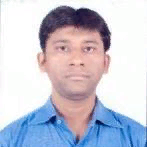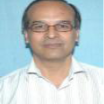International Journal of Image, Graphics and Signal Processing (IJIGSP)
IJIGSP Vol. 5, No. 1, 8 Jan. 2013
Cover page and Table of Contents: PDF (size: 1300KB)
Performance Analysis of Texture Image Classification Using Wavelet Feature
Full Text (PDF, 1300KB), PP.58-63
Views: 0 Downloads: 0
Author(s)
Index Terms
Multiclass, Wavelet, Feature Extraction, Neural Network, Naïve Bays, K-NN
Abstract
This paper compares the performance of various classifiers for multi class image classification. Where the features are extracted by the proposed algorithm in using Haar wavelet coefficient. The wavelet features are extracted from original texture images and corresponding complementary images. As it is really very difficult to decide which classifier would show better performance for multi class image classification. Hence, this work is an analytical study of performance of various classifiers for the single multiclass classification problem. In this work fifteen textures are taken for classification using Feed Forward Neural Network, Naïve Bays Classifier, K-nearest neighbor Classifier and Cascaded Neural Network.
Cite This Paper
Dolly Choudhary,Ajay Kumar Singh,Shamik Tiwari,V P Shukla,"Performance Analysis of Texture Image Classification Using Wavelet Feature", IJIGSP, vol.5, no.1, pp.58-63, 2013. DOI: 10.5815/ijigsp.2013.01.08
Reference
[1]Ajay Kumar Singh, Shamik Tiwari, and V P Shukla, “Wavelet based multiclass Image classification using neural network”, Proceedings of International Conference on Signal, Image and Video Processing pp.79-83, 2012.
[2]Gong, P. and Howarth, P.J.,”Frequency-based contextual classification and gray-level vector reduction for land-use identification” Photogrammetric Engineering and Remote Sensing, 58, pp. 423–437. 1992.
[3]Kontoes C., Wilkinson G.G., Burrill A., Goffredo, S. and Megier J, “An experimental system for the integration of GIS data in knowledge-based image analysis for remote sensing of agriculture” International Journal of Geographical Information Systems, 7, pp. 247–262, 1993.
[4]Foody G.M., ”Approaches for the production and evaluation of fuzzy land cover classification from remotely-sensed data” International Journal of Remote Sensing, 17,pp. 1317–1340 1996.
[5]San miguel-ayanz, J. and Biging, G.S,” An iterative classification approach for mapping natural resources from satellite imagery” International Journal of Remote Sensing, 17, pp. 957–982 , 1996.
[6]Aplin P., Atkinson P.M. and Curran P.J,” Per-field classification of land use using the forthcoming very fine spatial resolution satellite sensors: problems and potential solutions” Advances in Remote Sensing and GIS Analysis, pp. 219–239,1999.
[7]Stuckens J., Coppin P.R. and Bauer, M.E.,”Integrating contextual information with per-pixel classification for improved land cover classification” Remote Sensing of Environment, 71, pp. 282–296, 2000.
[8]Mojsilovic A., Popovic M.V. and D. M. Rackov, “On the selection of an optimal wavelet basis for texture characterization”, IEEE Transactions on Image Processing, vol. 9, pp. 2043–2050, December 2000.
[9]M. Unser, “Texture classification and segmentation using wavelets frames”, IEEE Transactions on Image Processing, vol. 4, pp. 1549–1560, November 1995.
[10]Bishop H., Schneider, W. Pinz A.J., “Multispectral classification of Landsat –images using Neural Network”, IEEE Transactions on Geo Science and Remote Sensing. 30(3), 482-490, 1992.
[11]Heerman.P.D.and Khazenie, “Classification of multi spectral remote sensing data using a back propagation neural network”, IEEE trans. Geosci. Remote Sensing, 30(1),81-88,1992.
[12]Hepner.G.F., “Artificial Neural Network classification using minimal training set: comparision to conventional supervised classification” Photogrammetric Engineering and Remote Sensing, 56,469-473,1990.
[13]Mohanty.k.k. and Majumbar. T.J.,”An Artificial Neural Network (ANN) based software package for classification of remotely sensed data”, Computers and Geosciences, 81-87, 1996.
[14]Shamik Tiwari, Ajay Kumar Singh and V P Shukla, “Statistical Moments based Noise Classification using Feed Forward Back Propagation Neural Network”, International Journal of Computer Applications 18(2):36-40, March 2011.
[15]Rish, I., An empirical study of the naive Bayes classifier, in IJCAI 2001 Workshop on Empirical Methods in Artificial Intelligence, 2001.
[16]Grubinger, M., Analysis and evaluation of visual information systems performance, 2007.
[17]Zhang, H., The optimality of naive Bayes, Proceedings of the 17th International FLAIRS Conference, AAAI Press, 2004.
[18]Zhang, H., Berg, A., Maire, M. and Malik, J., Svm-knn: Discriminative nearest neighbor classification for visual category recognition, in CVPR, 2006.
[19]Duda, R.O., Hart, P.E., and Stork, D.G., Pattern Classification, 2nd Edition, John Wiley. S. E. Fahlman, and C. Lebiere, “The cascade-correlation learning architecture”, in Advances in Neural Information Processing Systems 2, San Mateo, CA: Morgan Kaufmann, 1990,pp. 524-532.
[20]Cheng, Y.C., and Chen, S.Y., Image classification using color, texture and regions, in Image and Vision Computing, vol. 21 (9), pp. 759-776, 2003.
[21]Yanai, K., Generic image classification using visual knowledge on the Web, in Proceedings of the ACM International Conference on Multimedia, pp. 167-176, Berkeley,2003.
[22]Vogel, J. and Schiele, B., Natural scene retrieval based on a semantic modeling step, in Proceedings of the International Conference on Image and Video Retrieval, pp. 207-215, Dublin, 2004.
[23]R.A. Chayjan., “Modeling of sesame seed dehydration energy requirements by a soft computing”. Australian journal of crop science, vol. 4, no.3, pp.180-184,2010.
[24]Brodatz P., “Textures: A Photographic Album for Artist & Designers”, New York: Dover, New York, 1966.


